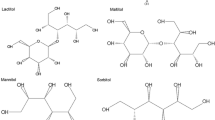Abstract
Millets have been recommended for several non-communicable diseases due to the presence of several nutritional as well as non-nutrient factors such as micronutrients and phytochemicals. However, their role in the medical nutrition therapy for diabetics is unclear due to the paucity of the glycemic index (GI) and glycemic load (GL) data of the traditional millet-based recipes of India. The present study was planned to assess the GI and GL of selected Maharashtrian millet-based recipes of India. Traditional western Indian millet-based recipes (bajra cheela, bajra bhakri, jowar bhakri, bajra khichadi, millet thalipeeth) were standardized, organoleptically evaluated and tested for their GI and compared to the GI and GL of wheat-based roti in healthy female volunteers (n = 6, age 18–21 years, BMI = 23.0–24.9). Among the six recipes tested, GI ranged from 44.94 to 73.48 indicating that millet-based foods had medium to high GI with a GL range of 18.06 to 31.29. Classification and use of traditional Indian cooked foods based on their GI and GL for the medical nutrition therapy of diabetes mellitus is necessary.


Similar content being viewed by others
References
Gopalpura PB, Jayanthi C, Dubet S. Effect of Trigonella foenum- graecum seeds on the glycemic index of food: a clinical evaluation. Int J Diab Dev Countries. 2007;27:2.
American Diabetes Association. Standards of medical care in diabetes. 2006 (position statement). Diabetes Care. 2013;36 Suppl 1:S11–66.
Katsilambros N, Liatis S, Makrilakis K. Critical review of the international guidelines: what is agreed upon—what is not? Nestle nutr workshop SerClin perform programme. Nestlé Nutr Workshop Ser Clin Perform Prog. 2006;11:207–18. discussion 218.
Food and Agriculture Organization of the United Nations/ World Health Organization. Carbohydrates in human nutrition. Report of a joint FAO/WHO expert consultation. FAO Food Nutr Pap. 1998;66:1–140.
Glycemic index defined. Glycemic Research Institute. Retrieved 2012-08-01.
Mendosa D. Revised international table of glycemic index (GI) and glycemic load (GL) values—2008.
FAO. Sorghum and millets in human nutrition. Title II. Series FAO code: 80 AGRIS: S01. 1995.
Mani UV, Mani IU, Iyer UM, Prakash B, Manivannan T, Campbell S, et al. Glycemic and lipemic response to various regional meals and South Indian snacks. Int J Diab Dev Countries. 1997;17.
Misra A, Chowbey P, Makkar BM, Vikram NK, Wasir JS, Chadha D. Consensus statement for diagnosis of obesity, abdominal obesity and the metabolic syndrome for Asian Indians and recommendations for physical activity, medical and surgical management. JAPI. 2009;57:163–70.
Wolever TMS, Bolognesi C. Source and amount of carbohydrate affect postprandial glucose and insulin in normal subjects. J Nutr. 1996;126:2798–806.
Gopalan C, Sastri BVR, Balasubramanian SC. Nutritive value of Indian foods. Hyderabad: National Institute of Nutrition; 2010.
Radhakrishan R. Food and nutrition security of the poor. Econ Polit Wkly. 2005;18:1817–21.
Basavaraj G, Parthasarathy P, Bhagavatula S, Ahmed W. Availability and utilization of pearl millet in India. SAT eJournal ejournal.icrisat.org 2010; 8.
Shobana S, Kumari SR, Malleshi NG, Ali SZ. Glycemic response of rice, wheat and finger millet based diabetic food formulations in normoglycemic subjects. Int J Food Sci Nutr. 2007;58(5):363–72.
Devdas RP, Leela R, Chandrasilera K. Effect of cooking on the digestibility and nutritive value of the proteins of black gram and green gram. Diabetologia. 1964;19:205–10.
Ludwig DS. The glycemic index: physiological mechanisms relating to obesity, diabetes, and cardiovascular disease. J Am Med Assoc. 2002;287(18):2414–23.
Collier G, O’Dea K. The effect of co-ingestion of fat on the glucose, insulin and GIP responses to carbohydrate and protein. AJCN. 1983;37:941–4.
Sahi A, Bijlani RL, Karmarkar MG, Nayar U. Modulation of glycemic response by protein, fat and fibre. Nutr Res. 1985;5:1431–5.
Chandalia M, Garg A, Lutjohann D, Klaus VB, Grundy SM, Brinkley LJ. Beneficial effects of high dietary fiber intake in patients with type 2 diabetes mellitus. N Engl J Med. 2000;342:1392–8.
Crapo PA, Reaven G, Olefsky J. Postprandial plasma glucose and insulin response to different complex carbohydrates. Diabetes. 1977;26:1178–83.
Iyer UM, Sophia A, Mani UV. Glycemic and lipemic responses of selected spirulina supplemented rice-based recipes in normal subjects. Int J Diab Dev Countries 1999; 19.
Jenkins DJ, Wolever TM, Taylor RH, et al. Glycemic index of foods: a physiological basis for carbohydrate exchange. Am J Clin Nutr. 1981;34:362–6.
Cahill GF, Etzwiler DD, Freinkel N. “Control” and diabetes. N Engl J Med. 1977;294:1004–5.
Jenkins DJA, Wolever TMS, Leeds AR. Dietary fibers, fiber analogues and glucose tolerance: importance of viscosity. Br Med J. 1978;1:392–4.
Pathak P, Srivastava S, Grover S. Development of food products based on millets, legumes and fenugreek seeds and their susceptibility in diabetic diets. Int J Food Sci Nutr. 2000;51:409–14.
Nambiar VS, Dhaduk JJ, Sareen N, Shahu T, Desai R. Potential functional implications of pearl millet (Pennisetum glaucum) in health and disease. J Appl Pharm Sci. 2011;01(10):62–7.
Nambiar VS, Sareen N, Daniel M, Gallego EB. Flavonoids and phenolic acids from pearl millet (Pennisetum glaucum) based foods and their functional implications. Funct Foods Health Dis. 2012;2(7):251–64.
Acknowledgments
The authors would like to thank Dr. Devindra S, Scientist, Food Chemistry Division, National Institute of Nutrition, Hyderabad, for his support in data interpretation.
Author information
Authors and Affiliations
Corresponding author
Rights and permissions
About this article
Cite this article
Nambiar, V.S., Patwardhan, T. Assessment of glycemic index (GI) and glycemic load (GL) for selected traditional millet-based Indian recipes. Int J Diabetes Dev Ctries 35 (Suppl 2), 157–162 (2015). https://doi.org/10.1007/s13410-014-0275-y
Received:
Accepted:
Published:
Issue Date:
DOI: https://doi.org/10.1007/s13410-014-0275-y




